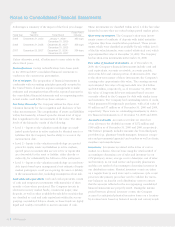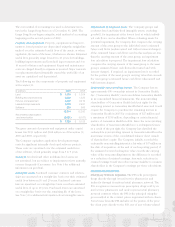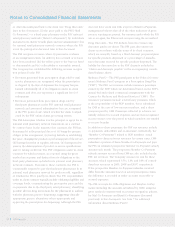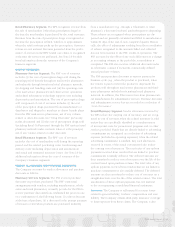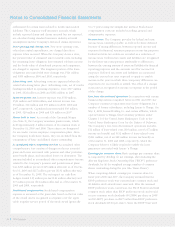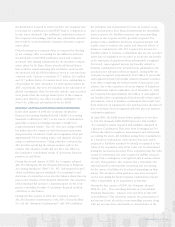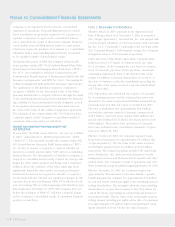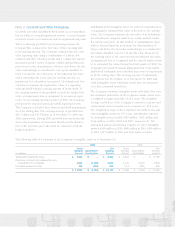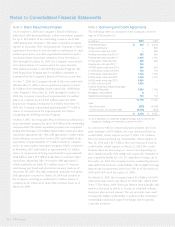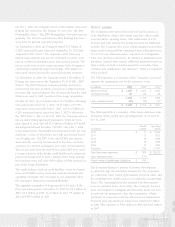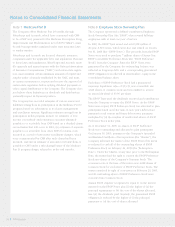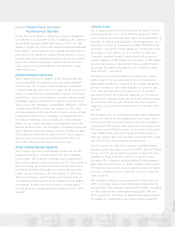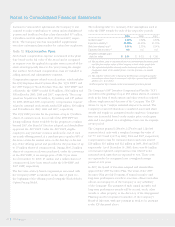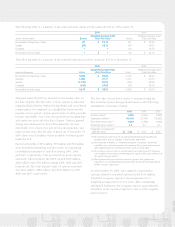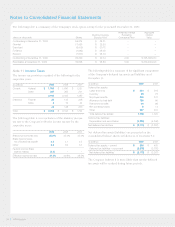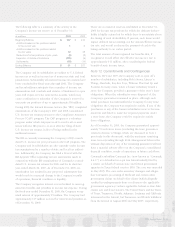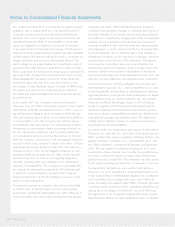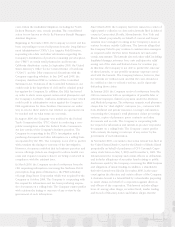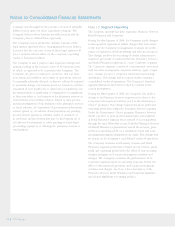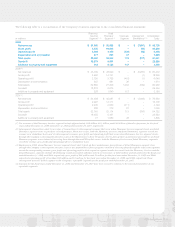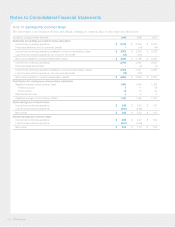CVS 2009 Annual Report Download - page 64
Download and view the complete annual report
Please find page 64 of the 2009 CVS annual report below. You can navigate through the pages in the report by either clicking on the pages listed below, or by using the keyword search tool below to find specific information within the annual report.
Notes to Consolidated Financial Statements
Note 8 Employee Stock Ownership Plan
The Company sponsored a defined contribution Employee
Stock Ownership Plan (the “ESOP”) that covered full-time
employees with at least one year of service.
In 1989, the ESOP Trust issued and sold $358 million of
20-year, 8.52% notes, which were due and retired on Decem-
ber 31, 2008 (the “ESOP Notes”). The proceeds from the ESOP
Notes were used to purchase 7 million shares of Series One
ESOP Convertible Preference Stock (the “ESOP Preference
Stock”) from the Company. Since the ESOP Notes were
guaranteed by the Company, the outstanding balance was
reflected as long-term debt, and a corresponding guaranteed
ESOP obligation was reflected in shareholders’ equity in the
consolidated balance sheet.
Each share of ESOP Preference Stock had a guaranteed
minimum liquidation value of $53.45, was convertible into
4.628 shares of common stock and was entitled to receive
an annual dividend of $3.90 per share.
The ESOP Trust used the dividends received and contributions
from the Company to repay the ESOP Notes. As the ESOP
Notes were repaid, ESOP Preference Stock was allocated to plan
participants based on (i) the ratio of each year’s debt service
payment to total current and future debt service payments
multiplied by (ii) the number of unallocated shares of ESOP
Preference Stock in the plan.
As of December 31, 2009, no shares of ESOP Preference
Stock were outstanding and allocated to plan participants.
On January 30, 2009, pursuant to the Company’s Amended
and Restated Certificate of Incorporation (the “Charter”), the
Company informed the trustee of the ESOP Trust of its intent
to redeem for cash all of the outstanding shares of ESOP
Preference Stock on February 24, 2009 (the “Redemption
Date”). Under the Charter, at any time prior to the Redemption
Date, the trustee had the right to convert the ESOP Preference
Stock into shares of the Company’s Common Stock. The
conversion rate at the time of the notice was 4.628 shares of
Common Stock for each share of ESOP Preference Stock. The
trustee exercised its right of conversion on February 23, 2009,
and all outstanding shares of ESOP Preference Stock were
converted into Common Stock.
Annual ESOP expense recognized is equal to (i) the interest
incurred on the ESOP Notes plus (ii) the higher of (a) the
principal repayments or (b) the cost of the shares allocated,
less (iii) the dividends paid. Similarly, the guaranteed ESOP
obligation is reduced by the higher of (i) the principal
payments or (ii) the cost of shares allocated.
Note 7 Medicare Part D
The Company offers Medicare Part D benefits through
SilverScript and Accendo, which have contracted with CMS
to be a PDP and, pursuant to the Medicare Prescription Drug,
Improvement and Modernization Act of 2003 (“MMA”), must
be risk-bearing entities regulated under state insurance laws
or similar statutes.
SilverScript and Accendo are licensed domestic insurance
companies under the applicable laws and regulations. Pursuant
to these laws and regulations, SilverScript and Accendo must
file quarterly and annual reports with the National Association
of Insurance Commissioners (“NAIC”) and certain state regula-
tors, must maintain certain minimum amounts of capital and
surplus under a formula established by the NAIC and must,
in certain circumstances, request and receive the approval of
certain state regulators before making dividend payments or
other capital distributions to the Company. The Company does
not believe these limitations on dividends and distributions
materially impact its financial position.
The Company has recorded estimates of various assets and
liabilities arising from its participation in the Medicare Part D
program based on information in its claims management
and enrollment systems. Significant estimates arising from its
participation in this program include: (i) estimates of low-
income cost subsidy and reinsurance amounts ultimately
payable to or receivable from CMS based on a detailed claims
reconciliation that will occur in 2010; (ii) estimates of amounts
payable to or receivable from other PDPs for claims costs
incurred as a result of retroactive enrollment changes, which
were communicated by CMS after such claims had been
incurred; and (iii) an estimate of amounts receivable from or
payable to CMS under a risk-sharing feature of the Medicare
Part D program design, referred to as the risk corridor.
CVS Caremark
60


